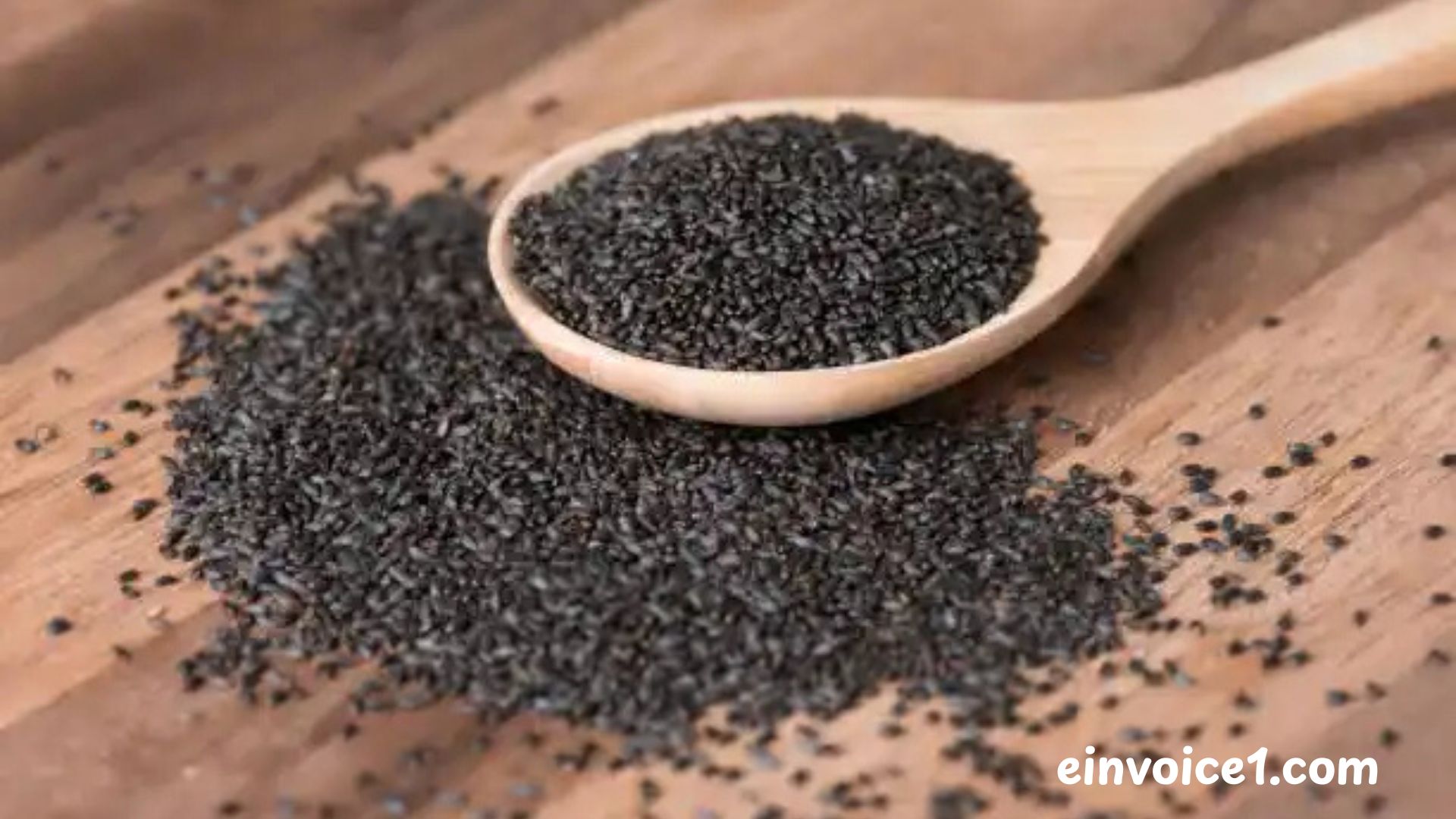Amongst the sea of superfoods, where the latest fads emerge and disappear, there are some of the time-tested ingredients that have the support of both tradition and the contemporary science. Basil seeds, or Sabja seeds, or tukmaria, are one of these powerhouses. They are the seeds of the sweet basil plant (Ocimum basilicum), and have been used as staple in Ayurvedic and traditional medicine over centuries, especially in Southeast Asia. However, what in particular shoots them into the superfood category? When moist, they become gelatinous, like chia seeds, their nutritional make-up, and their effects on health are entirely different. They have recently become extremely popular worldwide, no longer just a part of falooda and sherbets but an entire wellness trend.
People are increasingly searching for the sabja seeds benefits, eager to understand how this humble ingredient can contribute to modern health goals like weight management, improved digestion, and natural detoxification. The paper will explore in depth the science and custom behind these seeds and dissect the facts surrounding them and the hype surrounding them and give you a clear, practical guide on how to use these seeds to your benefit.
What Are Sabja Seeds? Origins and Identification
Sabja seeds, however, are often mistaken with the closely resembling chia seed; they belong to a different plant, the sweet basil plant (Ocimum basilicum). They are black, tear-shaped and a little bigger than chia seeds. When they are immersed in water they most distinctly appear. Whereas both seeds become gel-like, the sabja seeds become much larger in size and transparent with a prominent gelatinous outer layer, whereas the chia seeds become opaque and greyish in color and better preserve their oval form.
The history of these seeds in the traditional medicine systems is long. They are classified as cooling in Ayurveda and are frequently prescribed to calm Pitta dosha and fight the impacts of too much heat in the body. They are used as a common component in beverages such as falooda, nimbu pani (lemonade), and rooh afza in the Indian subcontinent, not only due to their texture but also due to their capacity to give a cooling effect. This historical use is now being validated by modern nutritional science, which is uncovering the mechanisms behind the various sabja seeds benefits, from their role as a digestive aid to their function as a potent source of plant-based nutrients.
A Deep Dive into the Top Health Benefits
The impressive sabja seeds benefits are largely attributed to their exceptional nutritional composition. They are high in fiber, vegetarian protein, good fats, and vital minerals. It is time to discuss the most important evidence-based benefits.
- Supports Weight Management: This is one of the most sought-after sabja seeds benefits. Soluble fiber is really high in the seeds. This fiber absorbs water and swells when wet becoming a gel. This gel gives a lot of bulk to what you have in your stomach, which gives a sensation of fullness and satiety. They can be an effective weapon in a weight management program as they can inhibit the drive to eat and decrease the total calorie consumption. Moreover, they are calorie-free by themselves and this makes them a good addition to diets.
- Improves Intestinal Health: That soluble fiber that helps you lose weight also helps your digestive system. It is a prebiotic and serves the good gut bacteria that are needed to have a healthy microbiome. The gel-like material also serves in decreasing stool consistency, bulking and facilitating passage through the intestinal system, which may be effective in decreasing constipation and increasing regularity.
- Helps Control Blood sugar: It is emerging that sabja seeds can help in the control of blood sugar. The fiber that forms a gel has the capability of decelerating the digestion and uptake of carbohydrates. This will help avoid spikes in blood glucose levels following a meal. A paper in Journal of Food Science and Technology emphasized the fact that sabja seeds have the potential to lower carbohydrate digestion, and this makes them useful to people with insulin resistance or type 2 diabetes.
- A Natural Body Coolant: In line with their Ayurvedic principles, one of the most traditional sabja seeds benefits is their ability to cool the body. They are usually eaten in hot seasons of summer, or by individuals who have too much interoceptive heat. A glass of lemon water mixed with a spoonful of soaked sabka seeds can provide instant help to heartburn and acidity and help to normalize body temperature.
Chia Seeds vs. Sabja Seeds: Which is the Difference?
Since they are similar to each other visually, it is important to know the difference between sabja seeds and chia seeds. Although they are both skeletons of nutritional excellence, there are certain nuances in their profile and the main uses.
Chia seeds are also excellent sources of protein and omega-3s as indicated in the table, hence, very useful in energy. The sabja seeds benefits are more focused on digestive health, cooling the body, and providing a potent source of soluble fiber for appetite control. You are able to decide on the particular health objective.
How to Incorporate Sabja Seeds into Your Diet
Harnessing the sabja seeds benefits is simple, but it requires one non-negotiable step: they must always be soaked before consumption. They are a choking danger because when dry, they might widen in your esophagus.
Step-by-Step Preparation:
- Take 1-2 teaspoons of sabja seeds.
- Soak them in a cup of warm water for 5-10 minutes.
- You will see they get swollen and grow a gelatinous coating.
- Enhance the seed which is gel-like to your food or beverage after squeezing out any excess water.
Superb and Simple Ways to use them:
Beverages: Place them in lemon water, jaljeera, buttermilk, smoothies or iced teas.
Desserts: Eat them as a healthy top to yogurt, pudding, kheer or fruit salads. They are one of the traditional items of the dessert beverage falooda.
Soups & Sauces: Soups, dressings and gravies, can be naturally thickened using their gel-like consistency.
Begin with a little (1 tsp each day) to test your body on it and slowly raise the dosage to 1-2 tabs daily.
Important Precautions and Potential Side Effects
While the sabja seeds benefits are compelling, it’s vital to consume them responsibly.
Always Soak Them: This can never be overemphasized. When dry sabja seeds come in contact with moisture, they may swell and can lead to choking and/or esophageal blockage, which is extremely dangerous.
Begin Small: With such a high fiber content, a large amount of it should not be introduced too fast or the result can be bloating, gas, or abdominal discomfort. Start with such a low dose and then progress slowly as your digestive system adapts.
Medication Interaction: They may reduce the rate of carbohydrate absorption and decrease blood sugar; therefore, people taking diabetes medicine should speak to their doctor before adding them to their diet because they may cause hypoglycemia. Equally, their fiber level can influence the absorption of some drugs.
Pregnancy and Breastfeeding: Scientific evidence on its safety is inadequate among pregnant women or breastfeeding women. Before consumption it is best to consult a provider of healthcare.
Nutritional and Functional Comparison: Sabja Seeds vs. Chia Seeds
| Aspect | Sabja Seeds (Basil Seeds) | Chia Seeds |
| Origin Plant | Sweet Basil (Ocimum basilicum) | Salvia hispanica |
| Appearance | Black, tear-shaped | Smaller, oval; black, white, or grey |
| Soaking Time | Swells very quickly (in minutes) | Takes longer to gel (15-30 mins) |
| Key Nutrient | Very high in soluble fiber | High in Omega-3 fatty acids & protein |
| Primary Benefit | Cooling, digestion, appetite control | Energy, omega-3s, bone health (calcium) |
| Taste | Very mild, almost tasteless | Very mild, slightly nutty |
| Traditional Use | Cooling drinks, Ayurvedic medicine | Ancient Aztec energy source |
Table Description: A clear comparison of the origins, nutritional focus, and uses of sabja seeds versus chia seeds. (ALT Text: A table comparing sabja seeds and chia seeds based on plant source, nutrition, and health benefits.)
Conclusion
The myriad sabja seeds benefits make them a worthy addition to the modern health-conscious pantry. These tiny seeds have a nutritional powerhouse whether it comes to being an effective ally of weight management and digestive health or a natural coolant and blood sugar controller. Their elevated soluble fiber content is the showstopper itself, giving them a sense of fullness, maintenance of gut health, and all-around metabolic activity. Although they are regularly suggested as substitutes of chia seeds, their distinct profile and their historical application warrant that consideration. You can safely unlock their potential by knowing how to make and eat them correctly they should always be soaked and in moderation. Like all diets, it is best to listen to your body and seek the advice of a professional in case you are already predisposed to health issues. Take ancient super food a step toward modern well-being Pick it up with a spoon, and pour it into your next beverage or dessert, and make a simple, natural step out to greater health.
FAQs
Q1: Can we eat sabja seeds daily?
A: You can take 1-2 tablespoons of soaked sabka seeds per day as a part of the balanced diet to experience the health benefits of the product; however, you should not consume it in case of any contraindications.
Q2: When are sabja seeds best to eat?
A: Before meals are the best time to make ones feel full to help combat weight and during the day in beverages to help cool the body particularly in hot weather.
Q3: Are sabja seeds side-effects?
A: When ingested in a dry state, they are dangerous in terms of being chokeable. The excess fiber may also be experienced as bloating or abdominal discomfort because of the large amounts of fiber in food.
Q4: Do sabja seeds assist in treating acne?
A: The antioxidants and anti-inflammatory properties could serve to promote the health of the skin, and cooling and detoxifying effects are thought to help calm acne internally.
Q5: What is the benefit of sabja seeds on people with diabetes?
A: Soluble fiber in sabja seeds may help post-meal blood sugar spikes by slowing down the intake of sugar in the blood, but it is necessary to ask a doctor.




